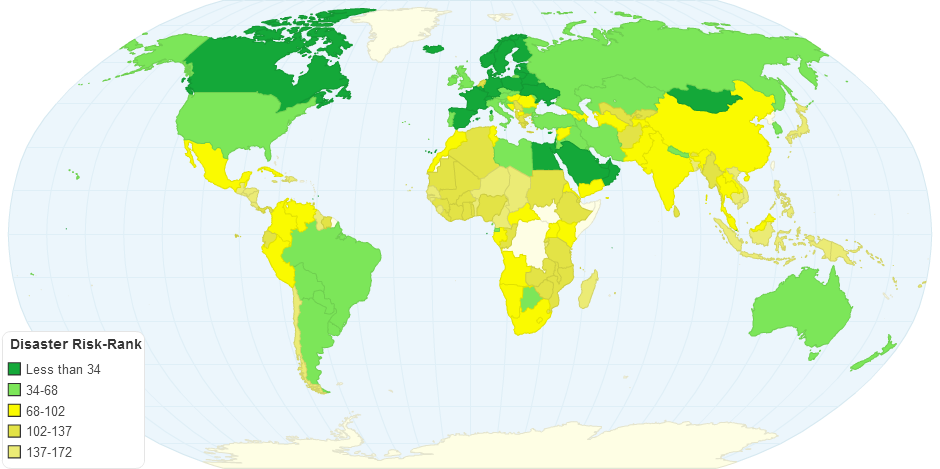This chart shows the Natural Disaster Risk 2015 by country.
A natural disaster is a major adverse event resulting from natural processes of the Earth; examples include floods, volcanic eruptions, earthquakes, tsunamis, and other geologic processes. A natural disaster can cause loss of life or property damage,and typically leaves some economic damage in its wake, the severity of which depends on the affected population's resilience, or ability to recover.An adverse event will not rise to the level of a disaster if it occurs in an area without vulnerable population.
The list of countries by natural disaster risk, as measured in the World Risk Index, calculated by the United Nations University for Environment and Human Security (UNU-EHS) and featured in the 2013 World Risk Report published by the Alliance Development Works/Bündnis Entwicklung Hilft. The report systematically considers a country’s vulnerability, and its exposure to natural hazards to determine a ranking of countries around the world based on their disaster risk.
The WRI developed by UNU-EHS and BEH the main feature of the WRR, determines the risk of becoming a victim of a disaster as a result of vulnerability and natural hazards such as earthquakes, storms, floods, droughts and sea level rise for 173 countries worldwide. The WRI is based on 28 indicators and research data which are globally freely available and results in a global risk ranking and maps which allow for comparison between countries. Risk is at its highest where a high level of exposure to natural hazards coincides with very vulnerable societies.
10 years ago

